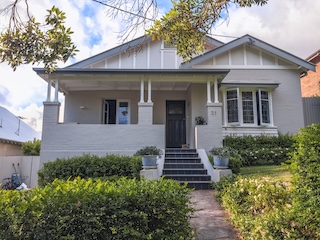Capalaba suburb profile
Capalaba is a bustling suburb located in the Redland City region, approximately 20km southeast of Brisbane's CBD. Known for its vibrant commercial precinct, Capalaba offers a range of shopping centres, dining options, and essential services, making it a central hub for the surrounding areas. The suburb is well-connected by public transport and major roads, providing easy access to Brisbane and the Gold Coast. Capalaba also boasts a variety of recreational facilities, including parks, sports complexes, and nature reserves, appealing to families and outdoor enthusiasts. Its blend of urban convenience and natural beauty makes Capalaba a desirable place to live and work.
Capalaba property market performance
Current median dwelling price$800,000Past 3 months
Property growth+12.0%Past 12 months
Capalaba's property market has shown robust growth over the past 12 months, with house values increasing by 9.3% and unit values surging by 14.9%. The median house price has reached $920,000, while units have averaged $685,000, indicating strong demand across both property types.
Sales activity has been active, with 85 houses and 11 units sold in the past 12 months. Houses are selling relatively quickly, with a median of 26 days on the market, compared to 32 days for units, suggesting a slightly faster pace in the housing sector.
The rental market in Capalaba has also experienced growth, with average rents for houses increasing by 2.4% and units by 4.8% over the last 12 months, reflecting a healthy demand for rental properties in the area.
| Houses | Units | |
|---|---|---|
Median price Past 3 months | $935K | $665K |
Change in value Past 12 months | 8.8% | 15.2% |
Sold Past 3 months | 69 | 10 |
Median days on market Past 12 months | 26 | 36 |
Average rent Past 12 months | $650 | $553 |
Change in rent Past 12 months | 1.6% | 6.3% |
5 year median price trend for houses and units
Capalaba demographics
Capalaba, located in the Redland City region of Queensland, is a suburb that offers a blend of suburban comfort and accessibility to urban amenities. With a population of 18,002, it is a community that balances family life with convenience. The median age of 39 suggests a mature community, with many residents likely to be established in their careers and family lives. This is reflected in the high percentage of couple families with children, which make up 42.1% of the population, indicating that Capalaba is a family-friendly suburb.
The suburb's housing market is characterized by a significant proportion of home ownership, with 30.5% of properties owned outright and 43.1% owned with a mortgage. This suggests a stable community with a strong sense of home ownership. Renting is less common, with only 26.4% of properties being rented, which may appeal to those looking for long-term residency and investment in the area. The median total household income of $1,747 per week reflects a comfortable standard of living, supporting the needs of its diverse family structures.
Capalaba's community is diverse, with 38.5% of couple families having no children, and 18.2% of families being one-parent households. This diversity is complemented by the suburb's amenities, including shopping centers, parks, and schools, making it an attractive location for families and individuals alike. The suburb's proximity to Brisbane also offers residents the advantage of city access while enjoying the benefits of suburban life. Overall, Capalaba is a well-rounded suburb that caters to a variety of lifestyles, making it a desirable place to live for many Australians.
Capalaba infrastructure, key developments and investment opportunities
Capalaba is experiencing several developments that could impact its property market. The ongoing redevelopment of Capalaba Central Shopping Centre aims to modernize the retail precinct, potentially increasing foot traffic and enhancing the suburb's appeal. Additionally, the planned Eastern Busway extension to Capalaba is set to improve public transport connectivity, which could boost property values along the route.
The suburb's proximity to the Redlands IndigiScapes Centre, an environmental education facility, continues to be a draw for nature enthusiasts and families. Recent upgrades to local parks and recreational facilities, including the Capalaba Regional Park, are enhancing livability. These improvements, combined with Capalaba's established schools and growing commercial sector, are likely to sustain strong demand for properties in the area, particularly among families and professionals seeking a balance between urban amenities and a suburban lifestyle.
Capalaba rental market trends
The rental market in Capalaba has experienced moderate growth, with house rents increasing by 2.4% over the past year to $650 per week, while unit rents have risen 4.8% to $550 per week. This steady growth reflects the suburb's appeal, offering a balanced lifestyle with access to essential amenities and a strong community atmosphere.
Suburbs near Capalaba
Some popular suburbs near Capalaba include:
How does Capalaba compare to nearby suburbs?
- Median house prices: Capalaba’s median house price is 2.2% higher than Alexandra Hills’s.
- Median unit prices: Capalaba’s median unit price is 16.9% lower than Manly West’s.
- House price growth: Over the past 12 months, house prices in Capalaba have grown 0.2% higher than in Manly West.
- Unit price growth: Over the past 12 months, unit prices in Capalaba have grown 18.7% higher than in Birkdale.
- Selling speed for houses: Properties in Capalaba are selling 33.3% faster than in Birkdale.
- Selling speed for units: Properties in Capalaba are selling 12.2% faster than in Birkdale.
- Investment considerations: In Capalaba, the rental yield for house is 4.3% lower than the Brisbane average, while the rental yield for units is 10.4% lower.
- House price growth: Over the past 12 months, house prices in Capalaba have grown 19.0% lower than the average rate of growth across Brisbane.
- Unit price growth:Over the past 12 months, unit prices in Capalaba have grown 5.4% lower than the average rate of growth for units across Brisbane.

